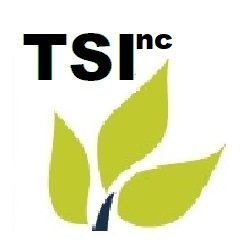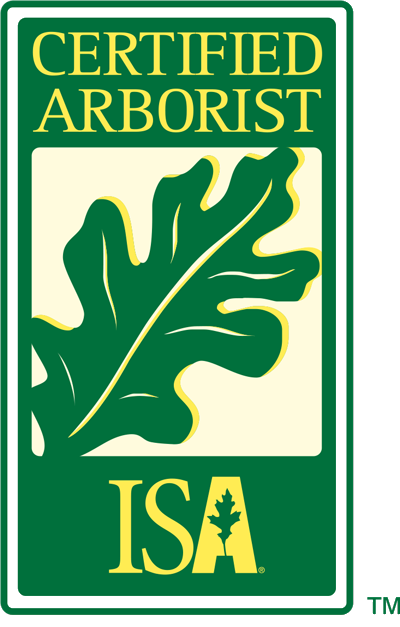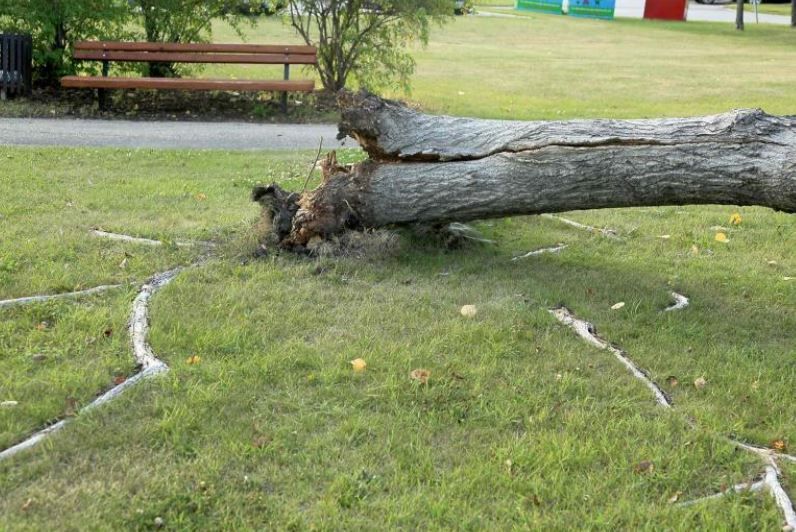
🌳 Winnipeg’s tree-lined streets are part of what makes the city so livable. From majestic elms to hardy maples, trees offer shade in summer, shelter from prairie winds, and a touch of nature in every neighbourhood. But beneath the surface, their roots can cause serious headaches—especially when they creep into foundations, crack sidewalks, or clog plumbing. Here’s how Winnipeggers can enjoy their trees without letting them wreak havoc underground. 🌲 Know Your Local Trees Winnipeg’s urban forest includes species like American elm, Manitoba maple, and poplar—many of which have aggressive root systems. These trees are well-adapted to the region’s clay-heavy soil, but that also means their roots spread wide and deep in search of water. If you're planting new trees, consider less invasive options: Japanese lilac Amur maple Crabapple Serviceberry These species are better suited for residential lots and less likely to damage infrastructure. 📏 Respect the Prairie Space In Winnipeg, where frost heave and shifting soil are common, planting trees too close to buildings or sidewalks can amplify root-related damage. Follow these local-friendly guidelines: Small trees : Plant at least 10–15 feet from sidewalks or driveways Medium to large trees : Keep 20–30 feet away from foundations and underground utilities Before digging, always contact Click Before You Dig Manitoba to locate underground lines. It’s free—and essential. 🚧 Install Root Barriers Root barriers are especially useful in Winnipeg’s older neighbourhoods like Wolseley or St. Boniface, where mature trees sit close to homes. These barriers redirect roots downward and away from vulnerable structures. For best results: Install barriers when planting new trees Consult a certified arborist for retrofitting around existing trees 💧 Watch for Moisture—and Fix It Fast Winnipeg’s freeze-thaw cycles can cause underground pipes to crack, creating moisture that attracts tree roots. If you notice: Wet patches in your yard Slow drains or backups Sudden plant overgrowth near plumbing lines Call a licensed plumber. Roots can infiltrate even small cracks and make them worse. 🧹 Maintain What You’ve Got Regular pruning and inspection are key. Winnipeg’s dry winters and humid summers can stress trees, making them more likely to send roots in search of water. Look out for: Cracks in your foundation or driveway Uneven sidewalks Gurgling sounds in plumbing If you suspect root intrusion, contact a local arborist like Perennial Trees Inc or consult the City of Winnipeg Urban Forestry Branch . 🏡 Legal and Neighbourly Considerations In Winnipeg, property owners have the right to trim overhanging branches and encroaching roots up to their property line. However, excessive cutting that harms the tree could make you liable for damages. Always consult a professional before taking action—and talk to your neighbour first. Mediation Services Manitoba can help if things get tense. Final Thought Winnipeg’s trees are part of its charm—but they don’t always play nice underground. With smart planting, regular maintenance, and a little neighbourly communication, you can keep your home safe and your trees healthy. Because in Friendly Manitoba, even roots should know their boundaries.

🌳 Tree care may appear deceptively simple—trim a few limbs here, prune a branch there—but anyone who’s spent time working among trunks, roots, and canopies knows it’s anything but. Whether you're maintaining an urban landscape or clearing forested acreage, the difference between a job well done and a dangerous situation often comes down to the tools used. Professional equipment doesn’t just make tree care more efficient—it’s essential to doing the job safely, precisely, and with lasting results. 🔧 Safety First: Protecting Workers and Bystanders Tree work is one of the most dangerous occupations in landscaping and arboriculture. Falling branches, unstable trees, chainsaw mishaps, and electrical hazards pose real threats. Here’s how professional-grade gear mitigates that risk: Climbing Equipment like harnesses, saddles, and friction savers are designed to distribute weight evenly and reduce fatigue, enabling arborists to move securely through the canopy. Chainsaws with safety features such as anti-kickback bars and chain brakes offer far better control than consumer-grade alternatives. Helmet systems with face shields and earmuffs protect against falling debris and noise exposure, helping prevent long-term injuries. Rope systems and rigging hardware let professionals lower limbs in a controlled fashion, avoiding crashes that could damage property or people. Relying on basic tools or makeshift solutions raises the risk of injury. Professional gear is not just about comfort—it’s engineered for real-life scenarios, with rigorous safety testing to back it. ✂️ Precision and Efficiency When it comes to results, specialized equipment empowers arborists to work with surgical precision: Pole pruners and telescoping saws allow for clean cuts at height without compromising technique. Wood chippers and stump grinders efficiently reduce debris and eliminate trip hazards—key for both aesthetics and functionality. Diagnostic tools like resistographs and sonic tomography help assess tree health internally, far beyond what the eye can see. Aerial lifts and bucket trucks make hard-to-reach places accessible, reducing the need for risky free-climbing. These tools don’t just make work faster—they make it smarter. A poorly executed cut or neglected root issue can lead to disease, instability, or early tree death. Equipment designed for the job helps ensure each tree gets the care it needs to thrive. 🛠️ Investing in Longevity and Environmental Stewardship Using professional equipment also aligns with broader goals of sustainability and conservation. Trees are valuable assets for ecosystems and communities—they clean air, provide shade, prevent erosion, and support biodiversity. Ensuring their care is handled with precision preserves these benefits. Professionals armed with the right tools are more likely to: Recognize and treat signs of stress before they escalate Avoid over-pruning, which can weaken trees and lead to decay Perform structural pruning that improves wind resistance and canopy health That’s not just good arboriculture—it’s responsible stewardship. 🌟 Conclusion: The Tools Shape the Outcome Tree care is a craft, and like any craft, the tools matter. Specialized equipment transforms what could be a risky guesswork job into a thoughtful, skillful practice. It enhances safety, improves outcomes, and respects the value of our living landscapes. Tree care maintenance is best left to skilled arborists: when it comes to tree service such as tree removal, pruning, disease or insect infestation treatments, professional tools aren’t a luxury. They’re an absolute necessity.
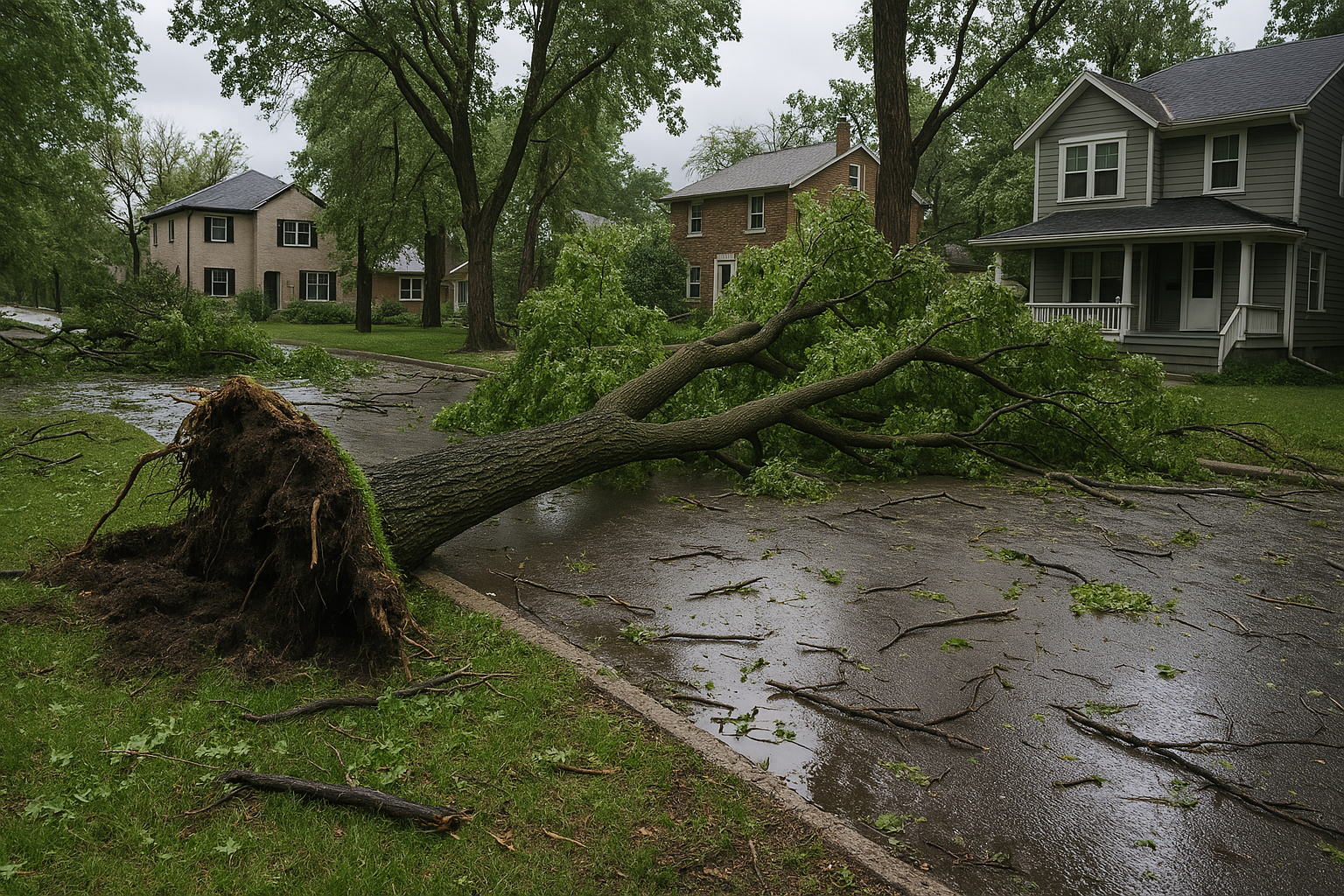
Storms can leave a trail of devastation in their wake, and among the most affected victims are trees. While these majestic giants often withstand the elements, strong winds, lightning, or heavy snow can weaken their structure or bring them down entirely. Knowing how to assess and care for storm-damaged trees not only helps protect property and lives, but also preserves your landscape for years to come. 🌪️ Step 1: Safety First, Always Before approaching any damaged tree: Check for hazards like downed power lines, broken limbs hanging overhead, or uprooted trunks. If there's any risk to life or property, call local emergency services or a professional arborist immediately. Don't attempt to move large branches or climb unstable trees—many injuries occur after the storm, not during it. 🌳 Step 2: Assess the Damage Every tree responds differently to stress. When inspecting the aftermath: Look for splits, cracks, or bark loss, especially near the trunk or major limbs. Bent or leaning trees might be salvageable, but only if the root system remains intact. Consider the tree's overall health and species—fast-growing species are often less resilient to structural damage. A tree doesn’t need to be perfect to survive, but it must have a strong foundation and the ability to heal. ✂️ Step 3: Prune with Purpose Prompt pruning helps reduce stress and prevent disease. Here’s how: Remove broken, hanging, or loosely attached branches. Make clean cuts just outside the branch collar to encourage proper healing. Use sharp tools and avoid over-pruning—trees already under stress need to retain as many healthy limbs as possible. For trees with extensive damage, a certified arborist can help determine whether selective pruning is enough or removal is necessary. ⚒️ Step 4: Support or Remove? Sometimes, saving the tree is feasible with a little help: Cabling or bracing may reinforce weak limbs or trunks. If more than 50% of the crown is gone or the trunk is severely split, removal might be the safest option. Consider long-term risks: unstable trees can pose threats in future storms. Don’t let nostalgia cloud judgment—your safety and property are worth protecting. 🍃 Step 5: Plan for Recovery Give surviving trees the best chance to thrive: Water them deeply, especially during dry spells following the storm. Apply mulch around the base, leaving space near the trunk to prevent rot. Avoid fertilizing immediately—allow the tree to stabilize before stimulating growth. Document the damage for insurance purposes and take this opportunity to consider replanting more storm-resilient species. Final Thought Handling storm-damaged trees isn’t just about clean-up—it’s about restoration and foresight. Whether you’re a homeowner surveying the backyard or a landscaper managing community spaces, take a breath, make a plan, and know that nature always offers a chance to rebuild. 🌿

When it comes to boosting property value, homeowners often think of kitchen remodels, fresh paint, or new flooring. But one of the most overlooked—and cost-effective—ways to enhance your home’s appeal and worth lies just outside your front door: your trees. Proper tree care doesn’t just beautify your landscape; it can significantly increase your property’s market value. Let’s explore how investing in tree maintenance pays off both aesthetically and financially. 🌳 Curb Appeal That Captivates First impressions matter. A well-landscaped yard with healthy, mature trees creates an inviting atmosphere that immediately elevates a property’s curb appeal. Trees provide structure, shade, and visual interest, framing your home in a way that feels both natural and intentional. Seasonal beauty : Trees offer year-round charm—from spring blossoms and lush summer canopies to vibrant fall foliage and sculptural winter silhouettes. Defined spaces : Strategically placed trees can define outdoor areas, creating cozy nooks, shaded patios, or natural privacy screens. Neighborhood prestige : Homes in tree-lined neighborhoods often appear more established and desirable, which can influence buyer perception and even neighborhood property values. 💰 Tangible Financial Gains Beyond aesthetics, well-maintained trees can deliver a measurable return on investment. According to the Arbor Day Foundation and various real estate studies, mature trees can increase property values by as much as 10% to 20%. Here’s how: Energy savings : Trees provide natural cooling in the summer and windbreaks in the winter, reducing energy bills. The U.S. Department of Energy estimates that properly placed trees can cut air conditioning costs by up to 35%. Stormwater management : Healthy trees absorb rainwater and reduce runoff, which can lower the risk of flooding and erosion—especially important in urban or flood-prone areas. Environmental incentives : Some municipalities offer tax breaks or incentives for maintaining trees or planting new ones, adding another layer of financial benefit. 🛠️ The Importance of Proper Tree Care Not all trees are created equal—and neither is all tree care. Neglected or poorly maintained trees can become liabilities, posing risks to structures, power lines, and people. That’s why regular maintenance is key. Pruning and trimming : Removing dead or overgrown branches improves tree health and reduces the risk of storm damage. Disease and pest management : Early detection and treatment can save a tree from decline and prevent the spread to other plants. Root care and mulching : Healthy roots mean a stable, thriving tree. Proper mulching and soil care support long-term growth. Hiring a certified arborist or professional tree care service ensures that your trees are not only safe but also optimized for health and longevity. 🏡 A Long-Term Investment Unlike many home improvements that depreciate over time, trees grow in value as they mature. A sapling planted today could become a major asset in a decade, offering shade, beauty, and increased property value for years to come. Moreover, trees contribute to a sense of well-being and connection to nature—qualities that are increasingly important to homebuyers seeking sanctuary in their living spaces. In Conclusion Tree care is more than a landscaping chore—it’s a smart investment in your property’s future. By enhancing curb appeal, reducing energy costs, and increasing market value, well-maintained trees offer both aesthetic and financial rewards. Whether you’re planning to sell your home or simply want to enjoy it more, giving your trees the attention they deserve is a decision that quite literally grows over time.
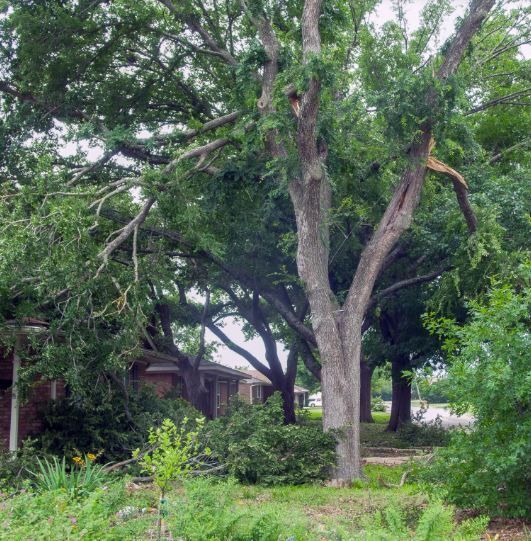
Trees are more than just beautiful additions to our landscapes—they provide shade, improve air quality, and even boost property value. But like any living organism, trees can suffer from disease, damage, and decline. While some issues are easy to spot, others require a trained eye. Knowing when to call a certified arborist can make the difference between saving a tree and removing it entirely. Here are some key signs that your tree may need professional attention: 1. Visible Dead or Dying Branches One of the most obvious signs of trouble is the presence of dead or dying branches, especially in the upper canopy. These limbs can become brittle and fall unexpectedly, posing a serious safety hazard. If you notice large sections of your tree that are bare or have brown, withered leaves during the growing season, it’s time to call an arborist. 2. Cracks or Splits in the Trunk Deep cracks, vertical splits, or cavities in the trunk can indicate structural weakness. These issues may be caused by storm damage, internal decay, or past pruning mistakes. A compromised trunk can make the tree unstable, increasing the risk of it falling during high winds or heavy snow. 3. Fungal Growth at the Base Mushrooms or conks growing around the base of a tree are often signs of internal rot. While not all fungi are harmful, many indicate that the tree’s root system or lower trunk is decaying. An arborist can assess the extent of the damage and determine whether the tree can be treated or needs to be removed. 4. Leaning or Unstable Posture A tree that suddenly starts leaning or appears to be shifting in the soil may have root damage or poor anchorage. This is especially concerning if the lean is recent or accompanied by cracked soil or exposed roots. A professional can evaluate the tree’s stability and recommend corrective measures, such as cabling or bracing . 5. Excessive Leaf Loss or Discoloration If your tree is losing leaves out of season or the foliage is turning yellow, brown, or spotted, it could be suffering from disease, pest infestation, or environmental stress. While some leaf drop is normal, especially in autumn, sudden or severe changes in foliage health should be investigated. 6. Signs of Pest Infestation Boring insects, such as emerald ash borers or bark beetles, can cause significant damage to trees. Look for small holes in the bark, sawdust-like material at the base, or unusual patterns in the wood. An arborist can identify the pest and recommend treatment options to prevent further harm. 7. Root Problems Roots are the unseen foundation of a tree’s health. Signs of root issues include heaving soil, exposed roots, or a tree that appears to be lifting out of the ground. Construction damage, poor drainage, or compacted soil can all impact root health. A certified arborist can diagnose these problems and suggest solutions to support the tree’s recovery. Why Call an Arborist? Certified arborists are trained in the science of tree care. They can diagnose diseases, assess structural integrity, and recommend safe and effective treatments. Whether it’s pruning, pest control, or tree removal, an arborist has the tools and expertise to handle the job safely and responsibly. Final Thoughts Trees are resilient, but they’re not invincible. Paying attention to the warning signs and acting early can prevent costly damage and preserve the beauty and safety of your landscape. If you notice any of the symptoms above, don’t wait—reach out to a professional arborist and give your tree the care it deserves.

Becoming a homeowner often comes with a flurry of firsts: first lawn mow, first paint touch-up, first time wondering what in the world that switch in the hallway does. But if your new property includes trees, you’ve also inherited a living, growing legacy. Trees not only boost curb appeal and property value but also provide shade, reduce energy costs, and serve as homes for wildlife. That said, they thrive on care — especially in those early years of homeownership when you're still learning the ropes. Here’s a beginner-friendly guide to keeping your trees healthy, happy, and standing tall for decades to come. 1. Get to Know Your Trees Start by identifying the trees on your property. Each species has its own quirks — from soil preferences and sunlight needs to growth habits and susceptibility to pests. Apps like LeafSnap or PictureThis can help, or consider inviting a local arborist for a quick walkthrough. Knowing what you’re working with is step one toward tailored care. 2. Watering Wisely Many people assume mature trees don’t need extra watering, but during dry spells or droughts, even the hardiest trees can get thirsty. A good rule of thumb: trees need about 10 gallons of water per inch of trunk diameter each week. New trees especially should be watered deeply at the base, encouraging roots to grow down and out rather than staying shallow. 3. Mulch Like a Pro Mulching is one of the easiest ways to protect your tree’s roots, retain moisture, and prevent weeds — but it’s often done incorrectly. Avoid the “mulch volcano” (piling mulch high around the trunk) which can lead to rot. Instead, apply a 2–4 inch layer in a wide circle around the base, keeping it a few inches away from the trunk. 4. Prune with Purpose Pruning helps shape trees, remove dead or diseased limbs, and improve airflow, but it should be done with care. Late winter or early spring is ideal for most species, before new growth begins. Start small: remove any damaged, crossing, or rubbing branches. For anything requiring a ladder or a chainsaw, it’s best to call in a pro. 5. Keep an Eye Out for Trouble Regularly inspect your trees for signs of distress like yellowing leaves, dead branches, mushrooms at the base (a possible sign of root rot), or odd bumps or insect activity. Catching issues early makes treatment easier and more effective. Again, a certified arborist can be a great ally here. 6. Give Trees Their Space Be mindful of nearby construction, lawn equipment, or even overzealous gardening. Tree roots extend far beyond the visible canopy and can be damaged by compacted soil or careless digging. When planting new trees, give them room to grow — both above and below ground. Trees are a long game. They ask for patience and consistency, but the payoff is a home shaded by beauty, character, and living history. With a little guidance, your yard can become a haven not just for you, but for generations of songbirds, squirrels, and future homeowners to come.
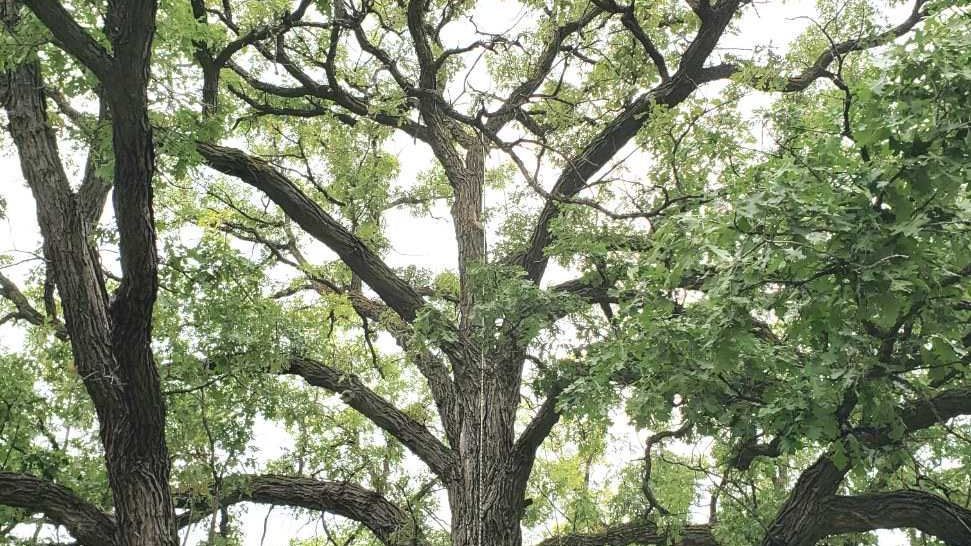
Trees are among the most resilient and essential organisms on Earth, providing oxygen, shade, and habitat while playing a crucial role in environmental balance. However, understanding their growth cycles is key to ensuring their health and longevity. Tree growth follows distinct seasonal patterns influenced by biological and environmental factors. Properly timing tree care—whether pruning, fertilizing, or planting—can significantly affect a tree's well-being and vitality. The Science Behind Tree Growth Cycles Trees experience growth cycles that fluctuate throughout the year. These cycles are driven by biological processes, climate conditions, and seasonal changes. Understanding these phases can help homeowners, gardeners, and arborists determine the best time for tree maintenance. Dormancy (Winter) Winter marks a period of rest for most trees, especially deciduous ones that shed their leaves in the fall. During this time, tree metabolism slows, conserving energy to survive cold temperatures. Although growth is minimal, root systems may still develop underground, provided conditions are favorable. Care Tip: Winter is the best time for pruning, as trees are less vulnerable to disease and pests. Structural pruning encourages strong future growth without interfering with the tree’s active development. Bud Break and Early Growth (Spring) As temperatures rise and daylight lengthens, trees emerge from dormancy. Buds swell, new leaves unfurl, and the tree accelerates photosynthesis, fueling rapid growth. The roots absorb water and nutrients from the soil, fostering an increase in branch and leaf expansion. Care Tip: Spring is ideal for fertilizing trees since their nutrient uptake is at its peak. Early inspections for diseases and pests can prevent long-term damage. Peak Growth and Canopy Expansion (Summer) During the summer months, trees reach peak productivity. Chlorophyll production is high, enabling them to convert sunlight into energy for continued growth. While root systems remain active, most development occurs above ground, with branches elongating and foliage thickening. Care Tip: Regular watering is essential, especially during hot and dry periods. Mulching around the base can help retain moisture and regulate soil temperature. Preparation for Dormancy (Fall) As autumn approaches, trees begin preparing for dormancy. Deciduous trees reduce photosynthesis, prompting leaves to change color and eventually drop. This cycle allows trees to conserve energy for winter survival. Root growth remains active, but above-ground development slows. Care Tip: Fall is an excellent time for planting new trees, as cooler temperatures support root establishment before winter. Removing deadwood and applying protective measures, like wrapping young trees, can safeguard them against extreme weather. Why Timing Matters for Tree Care Effective tree care isn’t just about routine maintenance—it’s about understanding when trees are most receptive to treatment. Performing tasks at the right time enhances growth, reduces stress, and ensures a healthy tree life cycle . Pruning at the Right Time Prevents Disease Cutting branches during dormancy minimizes the risk of infections. Fresh cuts in warmer months can attract pests and fungal spores, weakening the tree . Fertilization Supports Active Growth Adding nutrients in spring ensures maximum absorption. Fertilizing too late in the season can stimulate unwanted late growth, making trees vulnerable to winter damage. Watering and Mulching Reduce Stress During peak summer growth, trees face environmental challenges, including drought and heat. Timely watering and mulching improve soil moisture and prevent dehydration. Planting in Fall Encourages Root Development New trees planted in autumn get a head start on establishing strong root systems before spring. Fall planting sets trees up for success, reducing transplant shock. Final Thoughts Trees are constantly adapting to their environment, cycling through dormancy and vigorous growth stages. By aligning tree care practices with natural growth cycles, homeowners and landscapers can promote stronger, healthier trees. Whether it’s pruning in winter, fertilizing in spring, or watering in summer, timing plays a critical role in ensuring trees thrive for generations.
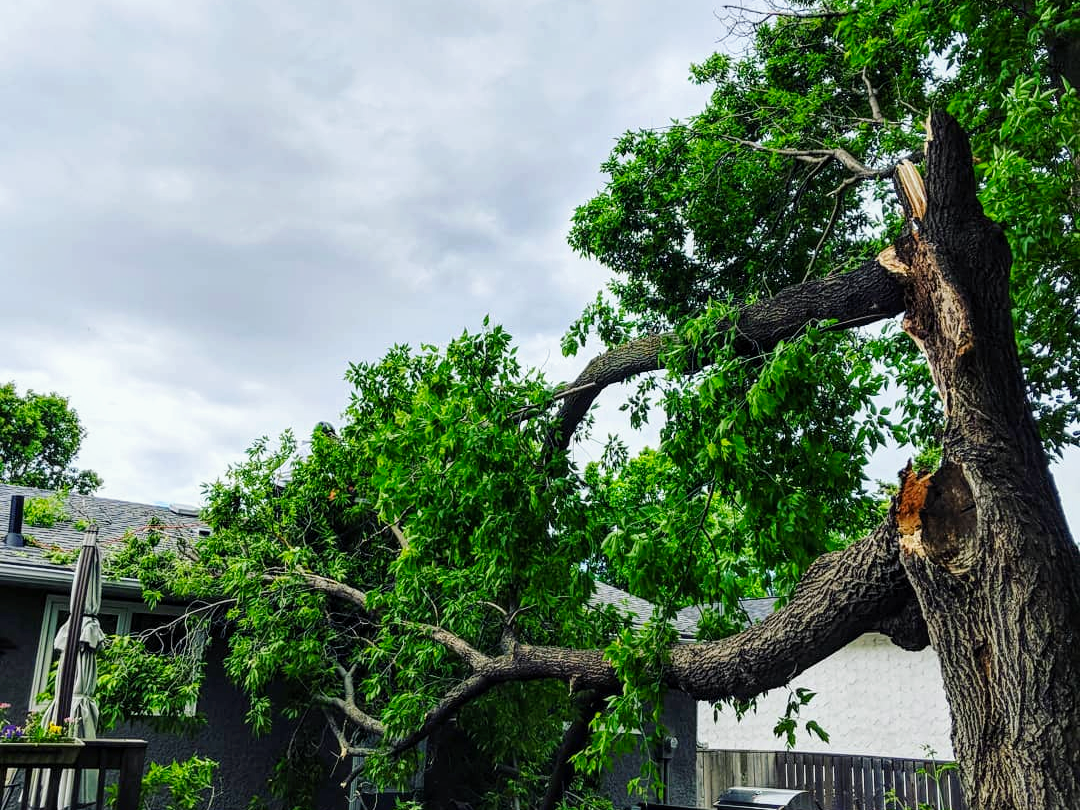
Severe weather can wreak havoc on trees, causing damage to branches, trunks, and roots. However, there are steps that can be taken to prepare trees for severe weather and minimize the potential for damage. By following these tips, you can help protect your trees and ensure their health and longevity. Tips for Minimizing Storm Damage: 1. Prune Regularly: One of the best ways to prepare trees for severe weather is to prune them regularly. By removing dead or weak branches, you can reduce the risk of them breaking off during a storm and causing damage to the tree or surrounding property. It is important to prune trees properly, following the natural shape of the tree and avoiding cutting too close to the trunk. 2. Mulch Around the Base: Mulching around the base of trees can help protect their roots from extreme weather conditions. Mulch acts as a buffer, helping to retain moisture in the soil and regulate temperature fluctuations. It also helps to prevent soil compaction, which can restrict root growth. Be sure to spread mulch evenly around the base of the tree, leaving a few inches of space between the mulch and the trunk to prevent rot. 3. Support Weak Branches: If you have trees with weak branches that are prone to breaking in severe weather, consider installing support systems to help strengthen them. This can include using cables or braces to help distribute the weight of the branches more evenly and reduce the risk of them snapping off. It is important to consult with a professional arborist before installing any support systems to ensure they are installed correctly and will not cause harm to the tree . 4. Water and Fertilize Properly: Proper watering and fertilization are essential for maintaining the health and resilience of trees. During periods of drought or extreme heat, it is important to water trees deeply and infrequently to encourage deep root growth. Fertilizing trees with a balanced fertilizer can also help improve their overall health and make them more resilient to severe weather conditions. 5. Inspect Regularly: Regularly inspecting trees for signs of disease, pest infestations, or structural issues can help identify potential problems before they escalate during severe weather. Look for signs of decay, cracks in the trunk, or pest damage, and address any issues promptly. If you are unsure about the health of your trees, consult with a professional arborist for a thorough assessment and recommendations for treatment. By following these tips for preparing trees for severe weather, you can help minimize the potential for damage and ensure the health and longevity of your trees. Taking proactive steps to care for your trees can help protect them during storms and other extreme weather events, ultimately saving you time and money in the long run. Remember to always prioritize safety when working on trees, and consult with a professional arborist for assistance with any complex tree care needs.
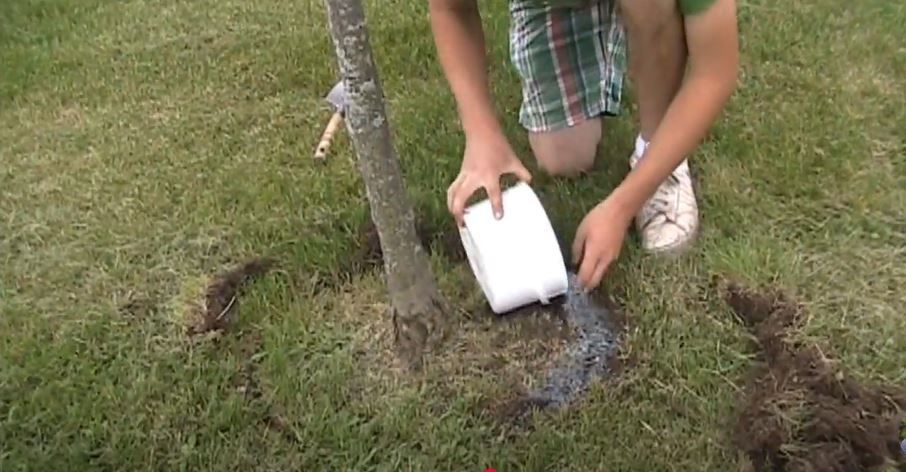
Healthy, vibrant trees are more than just beautiful additions to your landscape—they’re essential for clean air, shade, property value, and even mental well-being. While most homeowners think about watering or pruning, one often-overlooked aspect of tree care is fertilization. Proper tree fertilization plays a vital role in promoting strong growth, resistance to disease, and long-term vitality. Why Fertilization Matters Just like people need a balanced diet, trees require specific nutrients to grow and thrive. In forests, trees benefit from a natural cycle of decomposing organic matter that replenishes the soil. In urban and suburban settings, however, leaves are often raked away, grass competes for nutrients, and soils become compacted—making it harder for trees to access what they need. Fertilization is how we can help replace what’s missing and create optimal conditions for root development, healthy canopies, and longevity . Understanding Tree Nutrient Needs Trees primarily require three macronutrients: Nitrogen (N): Encourages leafy, vigorous growth and is often the most limiting nutrient in landscape soils . Phosphorus (P): Supports root development and flowering. Potassium (K): Aids in overall tree health and disease resistance. Other micronutrients such as iron, magnesium, and manganese are also important, especially in soils with imbalanced pH levels or poor drainage. Signs that your tree may need fertilization include yellowing leaves, stunted growth, sparse foliage, or early leaf drop. However, it’s best to conduct a soil test before applying any fertilizer to avoid overfeeding or contributing to runoff pollution. The Role of Soil Health Fertilizer can only do so much if the soil isn’t healthy. Compacted, nutrient-poor, or poorly drained soil can restrict root growth and reduce nutrient uptake. Aerating the soil, adding organic matter like compost or mulch, and maintaining proper moisture levels all contribute to a healthier environment for your trees. Using slow-release or organic fertilizers can improve soil structure while providing nutrients over time. This not only feeds your tree but also supports the soil ecosystem—beneficial microbes, fungi, and earthworms all play a part in tree vitality. When and How to Fertilize Late fall or early spring is typically the best time to fertilize trees, as roots are most active during these periods. However, the exact timing and type of fertilizer depend on your specific soil conditions, tree species, and local climate. It's important not to overdo it—excess nitrogen can cause weak growth that’s prone to pests and damage. A professional tree service can assess your soil and customize a fertilization plan tailored to your landscape. Give Your Trees the Care They Deserve Proper fertilization is a key part of any tree care routine, especially in developed landscapes where natural nutrient cycles are disrupted. Investing in your trees’ health today leads to stronger, safer, and more beautiful trees tomorrow.
